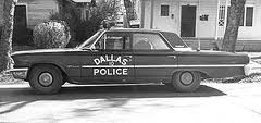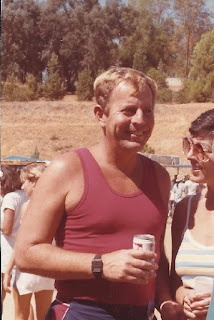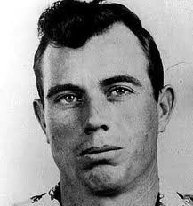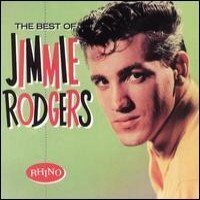A clothes hanger, coat hanger, or coathanger, is a hanging device in the shape/contour of:
- Human shoulders designed to facilitate the hanging of a coat, jacket, sweater, shirt, blouse or dress in a manner that prevents wrinkles, with a lower bar for the hanging of trousers or skirts.
- Clamp for the hanging of trousers, skirts, or kilts. Both types can be combined in a single hanger.
The clothing hanger was originally designed to allow people quick access to their clothing as well as designate an area, in their home, to keep their clothing in. It was also used to keep clothing dry or without a wrinkle.
There are three basic types of clothes hangers. The first is the wire hanger, which has a simple loop of wire, most often steel, in a flattened triangle shape that continues into a hook at the top. The second is the wooden hanger, which consists of a flat piece of wood cut into a boomerang-like shape with the edges sanded down to prevent damage to the clothing, and a hook, usually of metal, protruding from the point. Some wooden hangers have a rounded bar from tip to tip, forming a flattened triangle. This bar is designed to hang the trousers belonging to the jacket. The third kind and most used in today's world are plastic coat hangers, which mostly mimic the shape of either a wire or a wooden hanger. Plastic coat hangers are also produced in smaller sizes to accommodate the shapes of children's clothes.
Some hangers have clips along the bottom for suspending skirts. Dedicated skirt and trousers hangers may not use the triangular shape at all, instead using just a rod with clips. Other hangers have little rings coming from the top two bars to hang straps from tank-tops on. Specialized pant hanger racks may accommodate many pairs of trousers. Foldable clothes hangers that are designed to be inserted through the collar area for ease of use and the reduction of stretching are an old, yet potentially useful variation on traditional clothes hangers. They have been patented over 200 times in the U.S. alone, as in U.S. Patent 0586456, awarded in 1897 to George E. Hideout.
History
Referred to as a coat-hanger, the small piece of fabric attached to the nape of the neck inside a coat or jacket was developed in 1830, enabling the hanging of such types of outer clothing. Around 1850, small chains were developed to be used in place of fabric loops, though the use of loops of fabric continued, and are still a feature present in many garments today.
US President Thomas Jefferson was known to have a device for hanging clothes in his closet at Monticello. However, today's most-used hanger, the shoulder-shaped wire hanger, was inspired by a coat hook that was invented in 1869 by O. A. North of New Britain, Connecticut. An employee of the Timberlake Wire and Novelty Company, Albert J. Parkhouse of Jackson, Michigan has also been credited with the invention. The story goes that one morning in 1903, Parkhouse arrived to work to find that all coat hooks were taken. Annoyed, he took a piece of wire, bent it into the shape we would recognize today, and hung his coat. Also credited is Christopher Cann in 1876 as an engineering student at Boston University.
In 1906 Meyer May, a men's clothier of Grand Rapids, Michigan, became the first retailer to display his wares on his wishbone-inspired hangers. Some of these original hangers can be seen at the Frank Lloyd Wright-designed Meyer May House in Grand Rapids.
In 1932 Schuyler C. Hulett patented an improved design, which used cardboard tubes mounted on the upper and lower parts of the wire to prevent wrinkles, and in 1935 Elmer D. Rogers added a tube on the lower bar, which is still used.
Hangers can be made in wood, wire, plastic, rarely from a rubber substance and other materials. Some are padded with fine materials, such as satin, for expensive clothes, lingerie and fancy dresses. The soft, plush padding is intended to protect garments from shoulder dents that wire hangers may make. A caped hanger is an inexpensive wire clothing hanger covered in paper. Caped hangers are used by dry cleaners to protect garments after cleaning. Used wire hangers may be recycled, or returned to the dry cleaner.
The development of travel hangers, which are designed to provide a compact solution for travelers who require a simple, lightweight and foldable hanger that can accommodate their clothing needs, was a natural progression in the evolution of hangers. These hangers have been specifically designed with the traveler in mind, with their folding design allowing users to wrap their clothing around the hanger, making it easier to pack and store in their luggage.
This evolution has not only focused on their functionality and design but also on their environmental impact. The use of recycled plastics is one way in which hangers can be more sustainable. The production of hangers from recycled materials reduces waste, conserves energy and resources, and lowers greenhouse gas emissions. This development is a natural progression in the evolution of hangers, aligning with global efforts to reduce plastic waste and promote sustainability.
We know the craving for a shepherd's pie casserole can come on suddenly, and that means you want to have it fast. We took a few shortcuts when making this Satisfying Shepherd's Pie because we wanted to shave off some of the cooking time. That way, since you don't have to wait longer, you're more...well, satisfied.
Make it in advance or the day you are hankering for this classic, and you'll have a meal your family won't forget.
- 1 1/2 pounds ground beef
- 1 onion, chopped
- 1 (1.15-ounce) envelope onion soup mix
- 1 (18-ounce) jar beef gravy
- 1 teaspoon garlic powder
- 1/2 teaspoon black pepper
- 1 (16-ounce) package frozen mixed vegetables, thawed
- 4 cups prepared mashed potatoes
- Paprika for sprinkling


The Air Force Birthday on September 18th commemorates the establishment of The United States Air Force.
Almost from the moment the Wright brothers found a way to soar with the birds, the military incorporated aeronautical pursuits into their missions. However, the Air Force did not become a separate branch of the Armed Forces until September 18, 1947.
The military established the Signal Corps as the first aeronautical force in the United States. During the Civil War, the first missions provided visional communications via flags and torchlight from aerial balloons. Even so, the Signal Corps didn’t become an official branch of the Army until 1863. Its creation made way for more aeronautical training and study.
Since then, military air service has gone through many names and commands. A few examples are the Air Service of the US Army, the Air Corps, and the Army Air Force. Finally, in 1947, President Truman signed the National Security Act establishing the United States Air Force as a separate branch of the military.
As a result of pursuing advanced technology and superior airmen, the US Air Force emerged as the swiftest tactical force ready to deploy anywhere at a moment’s notice. On September 18, celebrate the airmen and women who are on watch every day.
AIR FORCE BIRTHDAY HISTORY
The 1947 National Security Act restructured The United States military and intelligence agencies in the aftermath of World War II. On September 18, 1947, President Truman signed the National Security Act establishing the U.S. Airforce on board the first Air Force One, a VC 54C.
Air Force FAQ
Q. Does the U.S. Airforce have a reserves component?
A. Yes. In fact, the U.S. Airforce has both Air Force Reserves and Air National Guard components.
Q. How many Air Force bases are in the United States?
A. Currently, there are 59 active Air Force bases in the United States.



















No comments:
Post a Comment